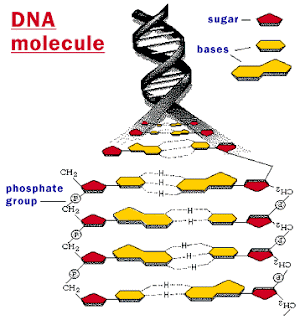Hiks... Hiks...
Facebook q ilang... T_T
Akhirny bikin lagi... T_T
Konbanwa minna-san...
Ogenki desu ka???
I didn't write something for a long time...
Ya~ha~
Fiuh...fiuh...
Hehehehe...
Now, Hey! Say! JUMP is making a winter concert....
Do you know???
Yabu acts as director.... and hikaru as assisten director...
That's so cool...... >_<
YABU IS GREAT!!!
Ganbatte ne... Yabu-kun...
Ouh... I don't know what will I write hear...
Heuheuheu.....
Hegh... (-_-")>
A mad girl....
HAHAHAHA...
It's holiday for me....
Yeah... no school.... no study... no homework....
Ya~ha~
Thanks God..... >_<
Something...
Label: Holiday
God's light....










They all are yabu's picture...
Tsuteki desu...
Hontou ni kakkoi...
Yabu-sama...
Kimi wa atashi no ottou desu... XD
Label: Shounen Club
Yatta.......
Finally....
the holiday cames to me....
thanks God.......
Domo arigatou gozaimasu...
Merci...
Xiexie....
Tomorrow will be my last day to enjoy all....
I have to forget all...
I have to stay focus with one thing....
No one else...
Fuan na kokoro to yuuki ga senaka awase ni natteru...
Dakedo ima nara sukoshi jishin wo motte arukeru yo...
Minna-san...
Ganbare desu...
OUSH!!!
So, whatever it is...
I will never run away from the reality but instead will accept it...
I will make the dreams come true with these hands...
I'm not afraid of anything...
Because I can walk with a little more faith now...
Yesterday is a legend...
Today is a gift...
Tomorrow is a mistery...
Minna-san...
I will do my best...
GANBARE DESU!!!!
Label: My Activity
Atashi wa....
Konbanwa!!!
Ogenki desu-ka???
genki desu...
yoroshiku onegaishimasu...
Surechigau shoujotachi
Mabushikute me wo sorashita
Mujaki na mama no kodomo no you na
Jiyuu na hane wo motte ita
Kurayami no mukougawa
Hikari sasu basho wo motome
Hitotsu nokotta tsubasa hirogetemo
Shinjitsu ni dake todokanai
Soko kara miru watashi no sugata wa
Donna fuu ni utsutte imasu ka
Konna konna itsuwari darake no
Hibi wo waraitobashite kudasai
Teokure ni naru sono mae ni
Tobu koto ni tsukaretemo
Hane orosu yuuki mo nai
Moshimo negai ga hitotsu kanau nara
Isso koko kara tsuredashite
Ima mo koko de watashi wa kawarazu
Ibasho wo zutto sagashite imasu
Douka douka anata ni dake wa
Kono omoi ga tsutawarimasu you ni
Hoshii mono nado hoka ni nai
Soko kara miru watashi no sugata wa
Donna fuu ni utsutte imasu ka
Konna konna itsuwari darake no
Hibi wo waraitobashite kudasai
Ima mo koko de watashi wa kawarazu
Ibasho wo zutto sagashite imasu
Douka douka anata ni dake wa
Kono omoi ga tsutawarimasu you ni
Hoshii mono nado hoka ni nai
Kimi wo aishita hibi wa
Boku no saigo no kiseki
Daremo ga mina
Hito koishiku naru kisetsu ga
Kotoshi mo mata
Atataka sa to tsumeta sa wo
Tsurete yatte kita
Osana sugita bokura ga mada
Nanimo shirazu
Warai atte shigami tsuite
Aruiteita hi wo
Omoidasu
Oshi yoseru konna itami ni
Donna ii wake wo sureba ii
Tsukare hateta karada de Nemuri ni tsuita kimi wo
Boku wa iki wo hisomete Mite ita
Sekaijuu de Tada hitori Boku dake ga shitte iru
Muboubi de Itoshii Yokogao
Meguri aeta toki wo omou
Onaji kisetsu mezameru you ni
Hateshinai itoshisa wa kono
Kokoro ni tashika ni umareru
Kagayaki no hitotsu to shite bokura wa
Hoshi tachi no shita de rekishi wo kizamu
Label: At the moment...
DNA And Chtomosome...

DNA 3D... Double helix...
DNA...
DNA Structure...
DNA Replication...
DNA Structure...
Human Chromosome... There are 46 chromosome.. 44 autosome and 2 gonosome...
Label: Knowledge
Biology...

Animal Cell.... I'ts an animal cell...
Eritrosit... Sel darah merah...
Escherichia Coli...
Vibrio Cholerae...
Anthrax Vyruses.......
Label: Knowledge
Ebola Disease...

Ni adl bentuk dari virus ebola.... sampai saat ini belum ada obat untuk mengobati penyalit ini... vaksin pun juga blm ada... virus ini sangat cepat dalam menyerang organ" tubuh... biasany, pasien hanya akan bertahan hidup selama beberapa hari.... maksimal hanya7-9 hari sebelum ajal menjemput.... ketika berhasil bertahan lebih dari 5 hari, pasien akan muntah darah dan memuntahkan organ tubuhny yang telah hancur oleh serangan virus ini... penyakit ini ditemukan di Afrika.... sungguh mengerikan!!!
Salah satu rumah sakit isolasi untuk pasien ebola di Afrika...
Ebola
Ebola is the common term for a group of viruses belonging to genus Ebolavirus, family Filoviridae, and for the disease which they cause, Ebola hemorrhagic fever. The virus is named after the Ebola River where the first recognised outbreak of Ebola hemorrhagic fever occurred. The viruses are characterized by long filaments and have a similar shape to the Marburg virus, also in the family Filoviridae, and share similar disease symptoms. Since its discovery, Ebolavirus has been responsible for a number of deaths.[1]
Ebolavirus first came to notice in 1976 in outbreaks of Ebola hemorrhagic fever in Zaire and Sudan.[2] The strain of Ebola which broke out in
Ebola is believed to be a zoonotic virus as it is currently devastating the populations of Western Lowland Gorillas in Central Africa. As of late 2005, three species of fruit bat have been identified as carrying the virus but not showing disease symptoms, and they are now believed to be the natural host species, or reservoir, of the virus.[citation needed]
Ebola hemorrhagic fever is potentially lethal and encompasses a range of symptoms including fever, vomiting, diarrhea, generalized pain or malaise, and sometimes internal and external bleeding. Mortality rates are extremely high, with the human case-fatality rate ranging from 50–89%, depending on viral subtype.[5] The cause of death is usually due to hypovolemic shock or organ failure.
Ebola is potentially lethal, and since no approved vaccine or treatment is available, Ebola is classified as a biosafety level 4 agent, as well as a Category A bioterrorism agent by the Centers for Disease Control and Prevention. It has the potential to be weaponized for use in biological warfare.[6] Its effectiveness as a biological-warfare agent is compromised by its extreme deadliness and its level of contagion: a typical outbreak spreads through a small village or hospital, infects the entire population, and then runs out of potential hosts, dying out before reaching the wider community. It is also significant that none of the strains of Ebola known to cause disease in humans have been found to be airborne—only the strain known as Ebola Reston (after the city of Reston, Virginia where it was first identified in Green Monkeys) is believed to be airborne.
The virus is named after the Ebola River Valley in the Democratic Republic of the Congo (formerly Zaïre), which is near the site of the first recognized outbreak in 1976, in a mission hospital run by Flemish nuns.[7]
Electron micrographs of members of genus Ebolavirus show them to have the characteristic thread-like structure of a filovirus.[8] EBOV VP30 is around 288 amino acids long.[8] The virions are tubular in general form but variable in overall shape and may appear as the classic shepherd's crook or eyebolt, as a U or a 6, or coiled, circular, or branched. However, laboratory purification techniques such as centrifugation may contribute to some of these.[8] Virions are generally 80 nm in diameter.[8] They are of variable length, typically around 1000 nm, but may be up to 1400 nm long. In the center of the virion is a structure called nucleocapsid, which is formed by the helically wound viral genomic RNA complexed with the proteins NP, VP35, VP30 and L. It has a diameter of 40-50 nm and contains a central channel of 20–30 nm in diameter. Virally encoded glycoprotein (GP) spikes 10 nm long and 10 nm apart are present on the outer viral envelope of the virion, which is derived from the host cell membrane. Between envelope and nucleocapsid, in the so-called matrix space, the viral proteins VP40 and VP24 are located..
Each virion contains one minor molecule of linear, single-stranded, negative-sense RNA, totaling 18,959 to 18,961 nucleotides in length. The 3′ terminus is not polyadenylated and the 5′ end is not capped. It was found that 472 nucleotides from the 3' end and 731 nucleotides from the 5' end were sufficient for replication.[8] It codes for seven structural proteins and one non-structural protein. The gene order is 3′ - leader - NP - VP35 - VP40 - GP/sGP - VP30 - VP24 - L - trailer - 5′; with the leader and trailer being non-transcribed regions which carry important signals to control transcription, replication and packaging of the viral genomes into new virions. The genomic material by itself is not infectious, because viral proteins, among them the RNA-dependent RNA polymerase, are necessary to transcribe the viral genome into mRNAs, as well as for replication of the viral genome.
- Virus attaches to host receptors through the GP (glycoprotein) surface peplomer and is endocytosed into vesicles in the host cell.
- Fusion of virus membrane with the vesicle membrane occurs; nucleocapsid is released into the cytoplasm.
- The encapsidated, negative-sense genomic ssRNA is used as a template for the synthesis ( 3' - 5') of polyadenylated, monocistronic mRNAs.
- Translation of the mRNA into viral proteins occurs using the host cell's machinery.
- Post-translational processing of viral proteins occurs. GP0 (glycoprotein precursor) is cleaved to GP1 and GP2, which are heavily glycosylated. These two molecules assemble, first into heterodimers, and then into trimers to give the surface peplomers. SGP (secreted glycoprotein) precursor is cleaved to SGP and delta peptide, both of which are released from the cell.
- As viral protein levels rise, a switch occurs from translation to replication. Using the negative-sense genomic RNA as a template, a complementary +ssRNA is synthesized; this is then used as a template for the synthesis of new genomic (-)ssRNA, which is rapidly encapsidated.
- The newly formed nucleocapsides and envelope proteins associate at the host cell's plasma membrane; budding occurs, and the virions are released.
Despite numerous studies, the wildlife reservoir of Ebolavirus has not been identified. Between 1976 and 1998, from 30,000 mammals, birds, reptiles, amphibians, and arthropods sampled from outbreak regions, no Ebolavirus was detected[9] apart from some genetic material found in six rodents (Mus setulosus and Praomys species) and a shrew (Sylvisorex ollula) collected from the Central African Republic in 1998.[10] Ebolavirus was detected in the carcasses of gorillas, chimpanzees and duikers during outbreaks in 2001 and 2003 (the carcasses were the source of the initial human infections), but the high mortality from infection in these species precludes them from acting as reservoirs.[9]
Plants, arthropods, and birds have also been considered as reservoirs; however, bats are considered the most likely candidate.[11] Bats were known to reside in the cotton factory in which the index cases for the 1976 and 1979 outbreaks were employed and have also been implicated in Marburg infections in 1975 and 1980.[9] Of 24 plant species and 19 vertebrate species experimentally inoculated with Ebolavirus, only bats became infected.[12] The absence of clinical signs in these bats is characteristic of a reservoir species. In 2002-03, a survey of 1,030 animals from Gabon and the Republic of the Congo including 679 bats found Ebolavirus RNA in 13 fruit bats (Hyspignathus monstrosus, Epomops franquetti and Myonycteris torquata).[13] Bats are also known to be the reservoirs for a number of related viruses including Nipah virus, Hendra virus and lyssaviruses.
Microbiologists have defined several subtypes of Ebola. The following list is not exclusive. A new strain of Ebolavirus has been identified in Uganda during an outbreak. It does not match any of the four Ebola subtypes previously identified by scientists.[14]
The Zaïre ebolavirus has the highest case fatality rate, up to 90% in some epidemics, with an average case fatality rate of approximately 83% over 27 years. The case-fatality rates were 88% in 1976, 100% in 1977, 59% in 1994, 81% in 1995, 73% in 1996, 80% in 2001-2002 and 90% in 2003. There have been more outbreaks of Zaïre ebolavirus than any other strain.
The first outbreak took place on August 26, 1976, in Yambuku, a town in the north of Zaïre. The first recorded case was Mabalo Lokela, a 44-year-old schoolteacher returning from a trip around the north of the state. His high fever was diagnosed as possible malaria and he was subsequently given a quinine shot. Lokela returned to the hospital every day. A week later, his symptoms included uncontrolled vomiting, bloody diarrhea, headache, dizziness, and trouble breathing. Later, he began bleeding from his nose, mouth, and anus. Lokela died on September 8, 1976, roughly 14 days after the onset of symptoms.
Soon after, more patients arrived with varying but similar symptoms including fever, headache, muscle and joint aches, fatigue, nausea, and dizziness. These often progressed to bloody diarrhea, severe vomiting, and bleeding from the nose, mouth, and anus. The initial transmission was believed to be due to reuse of the needle for Lokela's injection without sterilization. Subsequent transmission was also due to care of the sick patients without barrier nursing and the traditional burial preparation method, which involved washing and gastrointestinal tract cleansing.
Two nuns working in Yambuku as nurses also died in the same outbreak.[15]
Sudan ebolavirus was the second strain of Ebola reported in 1976. It apparently originated amongst cotton factory workers in Nzara, Sudan. The first case reported was a worker exposed to a potential natural reservoir at the cotton factory. Scientists tested all animals and insects in response to this, however none tested positive for the virus. The carrier is still unknown.
A second case involved a nightclub owner in Nzara, Sudan. The local hospital, Maridi, tested and attempted to treat the patient; however, nothing was successful, and he died. The hospital did not advocate safe and practical procedures in sterilizing and disinfecting the medical tools used on the nightclub owner, likely facilitating the spread of the virus in the hospital.
The most recent outbreak of Sudan ebolavirus occurred in May 2004. As of May 2004, 20 cases of Sudan ebolavirus were reported in Yambio County, Sudan, with five deaths resulting. The Centers for Disease Control and Prevention confirmed the virus a few days later. The neighbouring countries of Uganda and the Democratic Republic of Congo have increased surveillance in bordering areas, and other similar measures have been taken to control the outbreak. The average fatality rates for Sudan ebolavirus were 54% in 1976, 68% in 1979, and 53% in 2000/2001. The average case-fatality rate is 54%.
The Reston ebolavirus is suspected of being either another subtype of the Ebola or a new filovirus of Asian origin. It was discovered in crab-eating macaques from Hazleton Labortories (now Covance) in 1989. This discovery attracted significant media attention and led to the publication of The Hot Zone. Despite its status as a Level-4 organism, the Reston ebolavirus is non-pathogenic to humans and is only mildly fatal to monkeys;[16] the perception of its lethality was skewed due to the monkey's coinfection with Simian hemorrhagic fever virus (SHFV).[17]
During the incident in which it was discovered, six animal handlers eventually became seroconverted, one of whom had cut himself while performing a necropsy on the liver of an infected monkey. When the handler failed to become ill, it was concluded that the virus had a very low pathogenicity to humans.[18] Monkeys infected with Reston ebolavirus were again shipped to Reston, as well as Alice, Texas, in February 1990. More cases of Reston ebolavirus-infected monkeys were discovered in Siena, Italy in 1992, and in Texas again in March 1996.
This subtype of Ebola was first discovered amongst chimpanzees of the Tai Forest in Côte d'Ivoire, Africa. On November 1, 1994, the corpses of two chimpanzees were found in the forest. Necropsies showed blood within the heart to be liquid and brown, no obvious marks seen on the organs, and one with lungs filled with liquid blood. Studies of tissues taken from the chimps showed results similar to human cases during the 1976 Ebola outbreaks in Zaïre and Sudan. Later in 1994, more dead chimpanzees were discovered, with many testing positive to Ebola using molecular techniques. The source of contamination was believed to be the meat of infected Western Red Colobus monkeys, upon which the chimpanzees preyed.[19]
One of the scientists performing the necropsies on the infected chimpanzees contracted Ebola. She developed symptoms similar to dengue fever approximately a week after the necropsy and was transported to Switzerland for treatment. After two weeks she was discharged from hospital, and was fully recovered six weeks after the infection.
On November 24, 2007, the Uganda Ministry of Health confirmed an outbreak of Ebola in the Bundibugyo District. After confirmation of samples tested by the United States National Reference Laboratories and the Centers for Disease Control, the World Health Organization confirmed the presence of a new species of Ebolavirus. On February 20, 2008, the Uganda Ministry officially announced the end of the epidemic in Bundibugyo with the last infected person discharged on January 8, 2008.[20] Ugandan officials confirmed a total of 149 cases of this new Ebola species, with 37 deaths attributed to the strain.[21]
Symptoms are varied and often appear suddenly. Initial symptoms include high fever (at least 38.8°C; 101.8°F), severe headache, muscle, joint, or abdominal pain, severe weakness and exhaustion, sore throat, nausea, and dizziness.[22] Before an outbreak is suspected, these early symptoms are easily mistaken for malaria, typhoid fever, dysentery, influenza, or various bacterial infections, which are all far more common and reliably less fatal.
Ebola may progress to cause more serious symptoms, such as diarrhea, dark or bloody feces, vomiting blood, red eyes due to distension and hemorrhage of sclerotic arterioles, petechia, maculopapular rash, and purpura. Other secondary symptoms include hypotension (low blood pressure), hypovolemia, tachycardia, organ damage (especially the kidneys, spleen, and liver) as a result of disseminated systemic necrosis, and proteinuria. The interior bleeding is caused by a reaction between the virus and the platelets that produces a chemical that will cut cell-sized holes into the capillary walls.
Occasionally, internal and external hemorrhage from orifices, such as the nose and mouth, may also occur, as well as from incompletely healed injuries such as needle-puncture sites. Ebola virus can affect the levels of white blood cells and platelets, disrupting clotting.[citation needed] More than 50% of patients will develop some degree of hemorrhaging.[citation needed]
Methods of diagnosis of Ebola include testing saliva and urine samples. The span of time from onset of symptoms to death is usually between 2 and 21 days. By the second week of infection, patients will either defervesce (the fever will lessen) or undergo systemic multi-organ failure. Mortality rates are generally high, ranging from 50 to 90%.[22] The cause of death is usually due to hypovolemic shock or organ failure.[23]
Filoviruses replicate well in a wide range of organs and cell types such as hepatocytes, epithelial cells, fibroblasts, fibroblastic reticular cells and adrenal cortical cells.[8] Most notably, the susceptibility of human endothelial cells is likely the cause of the symptoms that appear in the late stages of the infection such as shock syndrome and hemorrhaging.[8]
Among humans, the virus is transmitted by direct contact with infected body fluids or, to a lesser extent, skin or mucous membrane contact. The incubation period can range from 2 to 21 days, but is generally 5–10 days.
Although airborne transmission between monkeys has been demonstrated by an accidental outbreak in a laboratory located in Virginia, USA, there is very limited evidence for human-to-human airborne transmission in any reported epidemics. Nurse Mayinga might represent the only possible case. The means by which she contracted the virus remains uncertain.
The infection of human cases with Ebolavirus has been documented through the handling of infected chimpanzees, gorillas, and forest antelopes—both dead and alive—as was documented in Côte d'Ivoire, the Republic of Congo and Gabon. The transmission of the Ebola Reston strain through the handling of cynomolgus monkeys has also been reported.[22]
So far, all epidemics of Ebola have occurred in sub-optimal hospital conditions, where practices of basic hygiene and sanitation are often either luxuries or unknown to caretakers and where disposable needles and autoclaves are unavailable or too expensive. In modern hospitals with disposable needles and knowledge of basic hygiene and barrier nursing techniques, Ebola has never spread on such a large scale.
In the early stages, Ebola may not be highly contagious. Contact with someone in early stages may not even transmit the disease. As the illness progresses, bodily fluids from diarrhea, vomiting, and bleeding represent an extreme biohazard. Due to lack of proper equipment and hygienic practices, large scale epidemics occur mostly in poor, isolated areas without modern hospitals or well-educated medical staff. Many areas where the infectious reservoir exists have just these characteristics. In such environments, all that can be done is to immediately cease all needle-sharing or use without adequate sterilization procedures, to isolate patients, and to observe strict barrier nursing procedures with the use of a medical rated disposable face mask, gloves, goggles, and a gown at all times. This should be strictly enforced for all medical personnel and visitors.
Ebola is unlikely to develop into a pandemic, or world-wide infection, due to its difficulty in spreading by airborne transmission and the period of time that the virus can use a living and contagious victim to spread compared to other infectious diseases. In isolated settings such as a quarantined hospital or a remote village, most victims are infected shortly after the first case of infection is present. In addition, the quick onset of symptoms from the time the disease becomes contagious in an individual makes it easy to identify sick individuals and limits an individual's ability to spread the disease by traveling. Because bodies of the deceased are still infectious, some doctors had to take measures to make sure that the disposal of dead bodies were conducted in a safe manner despite any local traditional burial rituals.[24]
There is no standard treatment for Ebola HF. Treatment is primarily supportive and includes minimizing invasive procedures, balancing electrolytes since patients are frequently dehydrated, replacing lost coagulation factors to help stop bleeding, maintaining oxygen and blood levels, and treating any complicating infections. Convalescent plasma (factors from those who have survived Ebola infection) shows promise as a treatment for the disease[citation needed]. Ribavirin is ineffective. Interferon is also thought to be ineffective. In monkeys, administration of an inhibitor of coagulation (rNAPc2) has shown some benefit, protecting 33% of infected animals from a usually 100% (for monkeys) lethal infection (unfortunately, this inoculation does not work on humans). In early 2006, scientists at USAMRIID announced a 75% recovery rate after infecting four rhesus monkeys with Ebolavirus and administering antisense drugs.[25]
Vaccines have been produced for both Ebola[26] and Marburg[27] that were 99% effective in protecting a group of monkeys from the disease. These vaccines are based on either a recombinant Vesicular stomatitis virus or a recombinant Adenovirus[28] carrying the Ebola spikeprotein on its surface. Early human vaccine efforts, like the one at NIAID in 2003, have so far not reported any successes.[29] The biggest problem with the vaccine is that unless the patient is given it near the onset of the virus (1-4 days after the symptoms begin), then there will be too much damage to the human body to repair, e.g., ruptured arteries and capillaries, vomiting, and other symptoms which may still cause enough harm to kill or seriously traumatize the patient.
As of August 30, 2007, 103 people (100 adults and three children) were infected by a suspected hemorrhagic fever outbreak in the village of Kampungu, Democratic Republic of the Congo (DRC). The outbreak started after the funerals of two village chiefs, and 217 people in four villages fell ill. The World Health Organization sent a team to take blood samples for analysis and confirmed that many of the cases are the result of Ebolavirus.[30] The Congo's last major Ebola epidemic killed 245 people in 1995 in Kikwit, about 200 miles from the source of the August 2007 outbreak.[31]
On November 30, 2007, the Uganda Ministry of Health confirmed an outbreak of Ebola in the Bundibugyo District. After confirmation of samples tested by the United States National Reference Laboratories and the Centers for Disease Control, the World Health Organization confirmed the presence of a new species of Ebolavirus.[32] The epidemic came to an official end on February 20, 2008. While it lasted, 149 cases of this new strain were reported, and 37 of those led to deaths.
Because of Ebola lethality and lack of approved vaccine or treatment, Ebola is classified as a Biosafety Level 4 agent, as well as a Category A bioterrorism agent[33] and a select agent by the CDC.
As a terrorist weapon, Ebola has been considered by members of Japan's Aum Shinrikyo cult, whose leader, Shoko Asahara, led about 40 members to Zaire in 1992 under the guise of offering medical aid to Ebola victims in what was presumably an attempt to acquire a sample of the virus.
Label: Knowledge
Albert Einstein.....
Albert Einstein
Albert Einstein (14 Maret 1879–18 April 1955) adalah seorang ilmuwan fisika teoretis yang dipandang luas sebagai ilmuwan terbesar dalam abad ke-20. Dia mengemukakan teori relativitas dan juga banyak menyumbang bagi pengembangan mekanika kuantum, mekanika statistik, dan kosmologi. Dia dianugerahi Penghargaan Nobel dalam Fisika pada tahun 1921 untuk penjelasannya tentang efek fotoelektrik dan "pengabdiannya bagi Fisika Teoretis".
Setelah teori relativitas umum dirumuskan, Einstein menjadi terkenal ke seluruh dunia, pencapaian yang tidak biasa bagi seorang ilmuwan. Di masa tuanya, keterkenalannya melampaui ketenaran semua ilmuwan dalam sejarah, dan dalam budaya populer, kata Einstein dianggap bersinonim dengan kecerdasan atau bahkan jenius. Wajahnya merupakan salah satu yang paling dikenal di seluruh dunia.
Pada tahun 1999, Einstein dinamakan "Tokoh Abad Ini" oleh majalah Time. Kepopulerannya juga membuat nama "Einstein" digunakan secara luas dalam iklan dan barang dagangan lain, dan akhirnya "Albert Einstein" didaftarkan sebagai merk dagang.
Untuk menghargainya, sebuah satuan dalam fotokimia dinamai einstein, sebuah unsur kimia dinamai einsteinium, dan sebuah asteroid dinamai 2001 Einstein.
Rumus Einstein yang paling terkenal adalah E=mc²
Einstein dilahirkan di Ulm di Württemberg, Jerman; sekitar 100 km sebelah timur Stuttgart. Bapaknya bernama Hermann Einstein, seorang penjual ranjang bulu yang kemudian menjalani pekerjaan elektrokimia, dan ibunya bernama Pauline. Mereka menikah di
Pada umur lima tahun, ayahnya menunjukkan kompas kantung, dan Einstein menyadari bahwa sesuatu di ruang yang "kosong" ini beraksi terhadap jarum di kompas tersebut; dia kemudian menjelaskan pengalamannya ini sebagai salah satu saat yang paling menggugah dalam hidupnya. Meskipun dia membuat model dan alat mekanik sebagai hobi, dia dianggap sebagai pelajar yang lambat, kemungkinan disebabkan oleh dyslexia, sifat pemalu, atau karena struktur yang jarang dan tidak biasa pada otaknya (diteliti setelah kematiannya). Dia kemudian diberikan penghargaan untuk teori relativitasnya karena kelambatannya ini, dan berkata dengan berpikir dalam tentang ruang dan waktu dari anak-anak lainnya, dia mampu mengembangkan kepandaian yang lebih berkembang. Pendapat lainnya, berkembang belakangan ini, tentang perkembangan mentalnya adalah dia menderita Sindrom Asperger, sebuah kondisi yang berhubungan dengan autisme.
Einstein mulai belajar matematika pada umur dua belas tahun. Ada gosip bahwa dia gagal dalam matematika dalam jenjang pendidikannya, tetapi ini tidak benar; penggantian dalam penilaian membuat bingung pada tahun berikutnya. Dua pamannya membantu mengembangkan ketertarikannya terhadap dunia intelek pada masa akhir kanak-kanaknya dan awal remaja dengan memberikan usulan dan buku tentang sains dan matematika.
Pada tahun 1894, dikarenakan kegagalan bisnis elektrokimia ayahnya, Einstein pindah dari Munich ke Pavia, Italia (dekat kota Milan). Albert tetap tinggal untuk menyelesaikan sekolah, menyelesaikan satu semester sebelum bergabung kembali dengan keluarganya di Pavia.
Kegagalannya dalam seni liberal dalam tes masuk Eidgenössische Technische Hochschule (Institut Teknologi Swiss Federal, di Zurich) pada tahun berikutnya adalah sebuah langkah mundur dia oleh keluarganya dikirim ke Aarau, Swiss, untuk menyelesaikan sekolah menengahnya, di mana dia menerima diploma pada tahun 1896, Einstein beberapa kali mendaftar di Eidgenössische Technische Hochschule. Pada tahun berikutnya dia melepas kewarganegaraan Württemberg, dan menjadi tak bekewarganegaraan.
Pada 1898, Einstein menemui dan jatuh cinta kepada Mileva Marić, seorang Serbia yang merupakan teman kelasnya (juga teman Nikola Tesla). Pada tahun 1900, dia diberikan gelar untuk mengajar oleh Eidgenössische Technische Hochschule dan diterima sebagai warga negar Swiss pada 1901. Selama masa ini Einstein mendiskusikan ketertarikannya terhadap sains kepada teman-teman dekatnya, termasuk Mileva. Dia dan Mileva memiliki seorang putri bernama Lieserl, lahir dalam bulan Januari tahun 1902. Lieserl Einstein, pada waktu itu, dianggap tidak legal karena orang tuanya tidak menikah.
Pada saat kelulusannya Einstein tidak dapat menemukan pekerjaan mengajar, keterburuannya sebagai orang muda yang mudah membuat marah professornya. Ayah seorang teman kelas menolongnya mendapatkan pekerjaan sebagai asisten teknik pemeriksa di Kantor Paten Swiss pada tahun 1902. Di
Einstein menikahi Mileva pada 6 Januari 1903. Pernikahan Einstein dengan Mileva, seorang matematikawan. Pada 14 Mei 1904, anak pertama dari pasangan ini, Hans Albert Einstein, lahir. Pada 1904, posisi Einstein di Kantor Paten Swiss menjadi tetap. Dia mendapatkan gelar doktor setelah menyerahkan thesis "Eine neue Bestimmung der Moleküldimensionen" ("On a new determination of molecular dimensions") pada tahun 1905 dari Universitas Zürich.
Di tahun yang sama dia menulis empat artikel yang memberikan dasar fisika modern, tanpa banyak sastra sains yang dapat ia tunjuk atau banyak kolega dalam sains yang dapat ia diskusikan tentang teorinya. Banyak fisikawan setuju bahwa ketiga thesis itu (tentang gerak Brownian), efek fotolistrik, dan relativitas khusus) pantas mendapat Penghargaan Nobel. Tetapi hanya thesis tentang efek fotoelektrik yang mendapatkan penghargaan tersebut. Ini adalah sebuah ironi, bukan hanya karena Einstein lebih tahu banyak tentang relativitas, tetapi juga karena efek fotoelektrik adalah sebuah fenomena kuantum, dan Einstein menjadi terbebas dari jalan dalam teori kuantum. Yang membuat thesisnya luar biasa adalah, dalam setiap kasus, Einstein dengan yakin mengambil ide dari teori fisika ke konsekuensi logis dan berhasil menjelaskan hasil eksperimen yang membingungkan para ilmuwan selama beberapa dekade.
Dia menyerahkan thesis-thesisnya ke "Annalen der Physik". Mereka biasanya ditujukan kepada "Annus Mirabilis Papers" (dari Latin: Tahun luar biasa). Persatuan Fisika Murni dan Aplikasi (IUPAP) merencanakan untuk merayakan 100 tahun publikasi pekerjaan Einstein di tahun 1905 sebagai Tahun Fisika 2005.
Di artikel pertamanya di tahun 1905 bernama "On the Motion—Required by the Molecular Kinetic Theory of Heat—of Small Particles Suspended in a Stationary Liquid", mencakup penelitian tentang gerakan Brownian. Menggunakan teori kinetik cairan yang pada saat itu kontroversial, dia menetapkan bahwa fenomena, yang masih kurang penjelasan yang memuaskan setelah beberapa dekade setelah ia pertama kali diamati, memberikan bukti empirik (atas dasar pengamatan dan eksperimen) kenyataan pada atom. Dan juga meminjamkan keyakinan pada mekanika statistika, yang pada saat itu juga kontroversial.
Sebelum thesis ini, atom dikenal sebagai konsep yang berguna, tetapi fisikawan dan kimiawan berdebat dengan sengit apakah atom itu benar-benar suatu benda yang nyata. Diskusi statistik Einstein tentang kelakuan atom memberikan pelaku eksperimen sebuah cara untuk menghitung atom hanya dengan melihat melalui mikroskop biasa. Wilhelm Ostwald, seorang pemimpin sekolah anti-atom, kemudian memberitahu Arnold Sommerfeld bahwa ia telah berkonversi kepada penjelasan komplit Einstein tentang gerakan Brown.
Label: Knowledge














